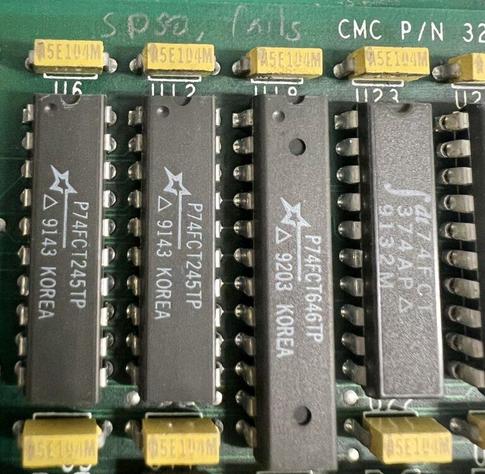VMEBus Switched Serial, commonly known as VXS, is an #ANSI standard (ANSI/VITA 41) that improves the performance of standard parallel #VMEbus by enhancing it to support newer switched serial fabrics. The base specification (ANSI 41) defines all common elements of the standard, while "dot"-specifications (ANSI 41.n) define extensions which use specific serial fabrics (such as #PCIExpress, #RapidIO, StarFabric from #DolphinInterconnectSolutions and #InfiniBand) or additional functionality.
#VMEBus
Sic Nic
The Cray Y-MP EL still has some issues with connections to the outside world. After fixing the battery issue, we still have problems to communicate via TCP/IP over the Ethernet. The Cray is connected through a Ethernet Interface card which has an AUI connector. On that AUI plug we have an AUI to Ethernet-Adapter and this connects
https://www.behindtheconsole.com/2024/10/16/sic-nic/
#VintageComputer #AUI #CRAY #Ethernet #IOS #VintageComputer #VintageComputerLabs #VMEBus #BTC
Been given a box of spare ROMs, allegedly found in a pile of #Datatrak gear that turned up on ebay some time ago.
After matching up the images, I found what appears to be LFTX v8.1.1.8 - the LF transmitter software.
Sadly it doesn't boot in the Locator emulator. Digging further, the rackmount hardware was a Force Computers 68000 VME-Bus system, and the unknown writes are to mystery VME cards.
Wish I knew the first thing about #VMEbus...
With some free time on his hands waiting for delayed parts to arrive, [Rik] set out to reverse engineer an old VME system he had acquired. VMEbus computers are based on the standard Eurocard PCB format, which defines a wide range of card sizes -- the most common being 6U height like [Rik]'s system. They usually consist of a rack-mounted card cage with a passive backplane. Originally, Motorola 68000-based CPU cards were used in VMEbus systems, but any processor could be used as long as you provided the right signals and timings to the system bus. Eurocard systems are less common these days, but are still used in some applications. In fact, if you're into synthesizers, you may be using Eurocards today -- the Eurorack standard is based on the standard 3U card size.
Back to [Rik]'s project, he had no idea what this system was nor how to use it. A bit of probing around and he found two UARTs, a system monitor, and a way to load and dump S-record files. He documents the process quite well, as the internal layout and memory map of the system is unlocked piece by piece. We also like his method of instrumenting the VMEbus signals -- logic analyzers are so small today, you can just mount one inside the rack.
Spoiler alert: [Rik] succeeds in mapping out the memory, writes some small programs in 68k assembly language, and even builds his own LED accessory card so he can blink some lights (as one must do).
We wrote about modularity recently, and VMEbus + Eurocard systems are good examples of modular design. You could quickly put together a robust assembly using entirely off-the-shelf cards, or mix in your own custom cards. But technology advancements in clock speeds and miniaturization have made these card cage, passive backplane systems less and less relevant today. Do any of you still use the VMEbus, or have you designed with them in the past? Let us know down in the comments below.


